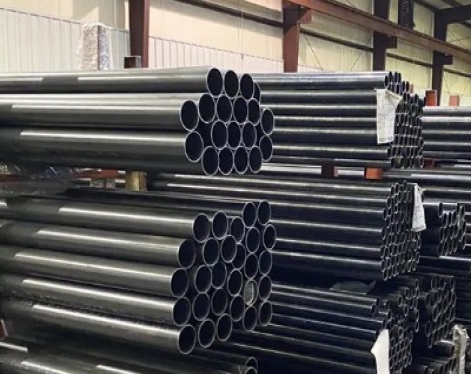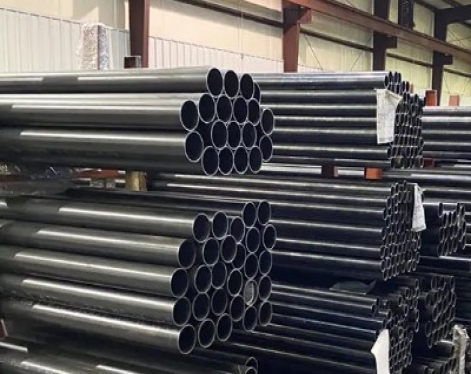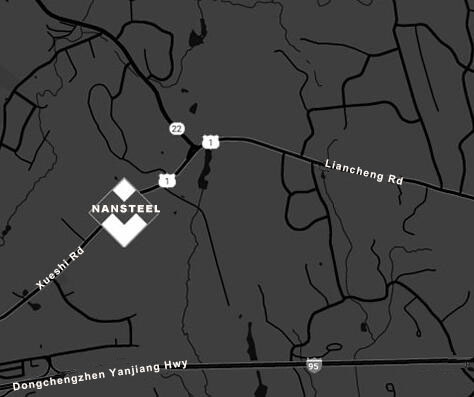Boiler tubes are critical components in boiler systems, and their quality and performance directly impact the boiler's operating efficiency and safety. Therefore, the boiler tube procurement process requires a rigorous and standardized approach to ensure that standard-compliant, high-quality products are purchased. The following is a detailed guide to the boiler tube procurement process, covering every step from requirements analysis to final acceptance.
Demand analysis and planning
1. Clarify your needs
The first step in the procurement process is to clarify the requirements for boiler tubes, including specifications, materials, quantity, technical parameters, etc. This information is usually provided by the technical department or equipment management department based on the boiler design requirements. The demand analysis should cover the following:
Type of boiler tube (e.g. seamless steel tube, welded steel tube, etc.).
Material (such as carbon steel, alloy steel, stainless steel, etc.).
Dimensions (outer diameter, wall thickness, length, etc.).
Technical standards (such as GB, ASTM, ASME, etc.).
Operating environment (such as temperature, pressure, corrosiveness, etc.).
2. Develop a procurement plan
Based on the demand analysis, a detailed procurement plan is developed, including budget, procurement cycle, delivery time, etc. The procurement plan should fully consider the production plan and inventory status to avoid production being affected by out-of-stock or delayed delivery.
Supplier selection and uation
1. Supplier preliminary selection
Through market research, industry recommendations, bidding, etc., we will preliminarily screen out suppliers that meet the requirements. Suppliers should meet the following conditions:
Possess relevant qualifications (such as ISO certification, special equipment manufacturing license, etc.)
Have good market reputation and performance.
Able to provide products that meet technical standards.
Qualification review: Check the supplier's business license, production license, quality system certification, etc.
Production capacity assessment: Understand the supplier's production equipment, technical level and production capacity.
Quality assurance capability: uate the supplier's quality control system, including raw material procurement, production process control, and testing methods.
After-sales service: Understand the supplier's after-sales service capabilities, such as technical support, return and exchange policies, etc.
Price and delivery time: Compare the quotations and delivery cycles of various suppliers and choose the supplier with the best cost-effectiveness.

3. Identify suppliers
Based on the uation results, the most suitable supplier is selected and a purchase contract is signed. The contract should clearly state the product specifications, quantity, price, delivery time, quality standards, acceptance method, payment method, and liability for breach of contract.
Procurement execution and tracking
1. Order placement
After the contract is signed, a purchase order is formally issued to the supplier and the delivery time and location are confirmed.
2. Production process tracking
For important or large-volume boiler tube purchases, the purchaser can send a dedicated person to the supplier's factory to track and supervise the production process to ensure that product quality meets requirements.
3. Logistics and delivery
Track logistics information to ensure that the boiler tubes are delivered to the designated location on time. For long-distance transportation, attention should be paid to packaging and protective measures to avoid damage to the products during transportation.
Acceptance and inspection
Dimensional inspection: Measure outer diameter, wall thickness, length, and other parameters to ensure they meet requirements.
Material inspection: Confirm material compliance through methods such as spectral analysis.
Mechanical properties testing: testing tensile strength, yield strength, elongation and other indicators.
Non-destructive testing: Use ultrasonic, X-ray and other methods to detect whether there are internal defects.
Pressure test: Perform water pressure test on boiler tubes to ensure their pressure resistance.
Warehousing and payment
1. Warehouse management
Boiler tubes that pass inspection must undergo warehouse entry procedures and be properly managed. Product information, including specifications, quantity, production date, and supplier, must be recorded upon entry for easy traceability.
2. Payment settlement
Payment will be settled according to the payment method agreed upon in the contract. Common payment methods include prepayment, cash on delivery, and installment payments.
After-sales service and feedback
1. After-Sales Service
If you discover any quality issues with boiler tubes during use, contact the supplier promptly and request technical support or a return or exchange service.
2. Supplier Performance uation
After the purchase is complete, uate the supplier's performance, including product quality, on-time delivery, and after-sales service. The uation results serve as an important reference for subsequent purchases.
Continuous Improvement
1. Summary and Optimization
Summarize the current procurement process, analyze existing issues and shortcomings, propose improvement measures, and optimize the procurement process.
2. Establish a Supplier Database
Add qualified suppliers to the database, establish long-term partnerships, and ensure the stability and reliability of future procurement.
Conclusion
The boiler tube procurement process involves multiple steps, each requiring strict control to ensure high-quality products. A standardized procurement process not only reduces procurement risks but also improves efficiency, creating greater value for the company.
Read more: Recycling Methods for Boiler Tubes
Demand analysis and planning
1. Clarify your needs
The first step in the procurement process is to clarify the requirements for boiler tubes, including specifications, materials, quantity, technical parameters, etc. This information is usually provided by the technical department or equipment management department based on the boiler design requirements. The demand analysis should cover the following:
Type of boiler tube (e.g. seamless steel tube, welded steel tube, etc.).
Material (such as carbon steel, alloy steel, stainless steel, etc.).
Dimensions (outer diameter, wall thickness, length, etc.).
Technical standards (such as GB, ASTM, ASME, etc.).
Operating environment (such as temperature, pressure, corrosiveness, etc.).
2. Develop a procurement plan
Based on the demand analysis, a detailed procurement plan is developed, including budget, procurement cycle, delivery time, etc. The procurement plan should fully consider the production plan and inventory status to avoid production being affected by out-of-stock or delayed delivery.
Supplier selection and uation
1. Supplier preliminary selection
Through market research, industry recommendations, bidding, etc., we will preliminarily screen out suppliers that meet the requirements. Suppliers should meet the following conditions:
Possess relevant qualifications (such as ISO certification, special equipment manufacturing license, etc.)
Have good market reputation and performance.
Able to provide products that meet technical standards.
2. Supplier uation
Conduct a comprehensive assessment of the shortlisted suppliers, including:Qualification review: Check the supplier's business license, production license, quality system certification, etc.
Production capacity assessment: Understand the supplier's production equipment, technical level and production capacity.
Quality assurance capability: uate the supplier's quality control system, including raw material procurement, production process control, and testing methods.
After-sales service: Understand the supplier's after-sales service capabilities, such as technical support, return and exchange policies, etc.
Price and delivery time: Compare the quotations and delivery cycles of various suppliers and choose the supplier with the best cost-effectiveness.

3. Identify suppliers
Based on the uation results, the most suitable supplier is selected and a purchase contract is signed. The contract should clearly state the product specifications, quantity, price, delivery time, quality standards, acceptance method, payment method, and liability for breach of contract.
Procurement execution and tracking
1. Order placement
After the contract is signed, a purchase order is formally issued to the supplier and the delivery time and location are confirmed.
2. Production process tracking
For important or large-volume boiler tube purchases, the purchaser can send a dedicated person to the supplier's factory to track and supervise the production process to ensure that product quality meets requirements.
3. Logistics and delivery
Track logistics information to ensure that the boiler tubes are delivered to the designated location on time. For long-distance transportation, attention should be paid to packaging and protective measures to avoid damage to the products during transportation.
Acceptance and inspection
1. Arrival inspection
Upon arrival, boiler tubes undergo a visual inspection, including ensuring packaging is intact, labeling is clear, and the quantity is consistent with the contract.2. Quality inspection
Conduct quality inspection on boiler tubes in accordance with the technical standards agreed in the contract. Inspection contents include:Dimensional inspection: Measure outer diameter, wall thickness, length, and other parameters to ensure they meet requirements.
Material inspection: Confirm material compliance through methods such as spectral analysis.
Mechanical properties testing: testing tensile strength, yield strength, elongation and other indicators.
Non-destructive testing: Use ultrasonic, X-ray and other methods to detect whether there are internal defects.
Pressure test: Perform water pressure test on boiler tubes to ensure their pressure resistance.
3. Inspection report
After the inspection is completed, a detailed inspection report will be issued. If the product is qualified, it will enter the warehousing stage; if there are any quality issues, timely communication will be made with the supplier to negotiate a solution.Warehousing and payment
1. Warehouse management
Boiler tubes that pass inspection must undergo warehouse entry procedures and be properly managed. Product information, including specifications, quantity, production date, and supplier, must be recorded upon entry for easy traceability.
2. Payment settlement
Payment will be settled according to the payment method agreed upon in the contract. Common payment methods include prepayment, cash on delivery, and installment payments.
After-sales service and feedback
1. After-Sales Service
If you discover any quality issues with boiler tubes during use, contact the supplier promptly and request technical support or a return or exchange service.
2. Supplier Performance uation
After the purchase is complete, uate the supplier's performance, including product quality, on-time delivery, and after-sales service. The uation results serve as an important reference for subsequent purchases.
Continuous Improvement
1. Summary and Optimization
Summarize the current procurement process, analyze existing issues and shortcomings, propose improvement measures, and optimize the procurement process.
2. Establish a Supplier Database
Add qualified suppliers to the database, establish long-term partnerships, and ensure the stability and reliability of future procurement.
Conclusion
The boiler tube procurement process involves multiple steps, each requiring strict control to ensure high-quality products. A standardized procurement process not only reduces procurement risks but also improves efficiency, creating greater value for the company.
Read more: Recycling Methods for Boiler Tubes









